After six months of construction, the Blackbird Bar is open for business!

With the bricks and ceiling finished, I finally spread out all the accessories I’ve been hoarding since I started this project back in November — like this little guy. I’ve named him Max.
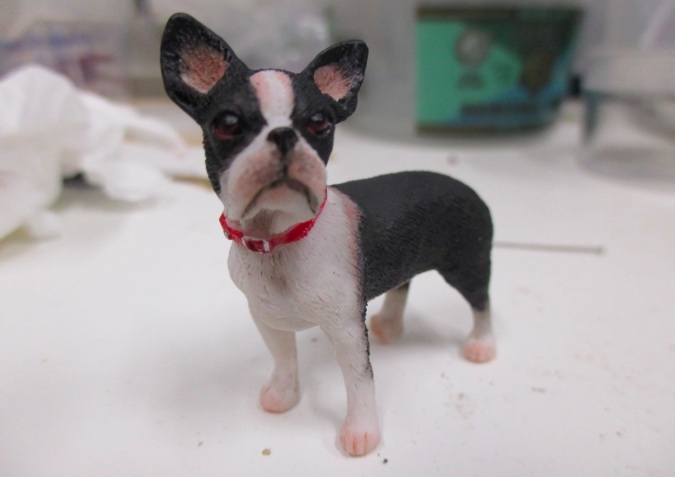
I specifically bought this dog because he has a collar (most resin dogs don’t), but he also happens to fit with the bar’s black and white and red color scheme. I wanted him to have a collar so he can be leashed to the fence outside the bar.
I attached a necklace chain to one of the posts with a jump ring. The bottom of the post was too thick for the jump ring to fit around, so I had to put it up at the top.
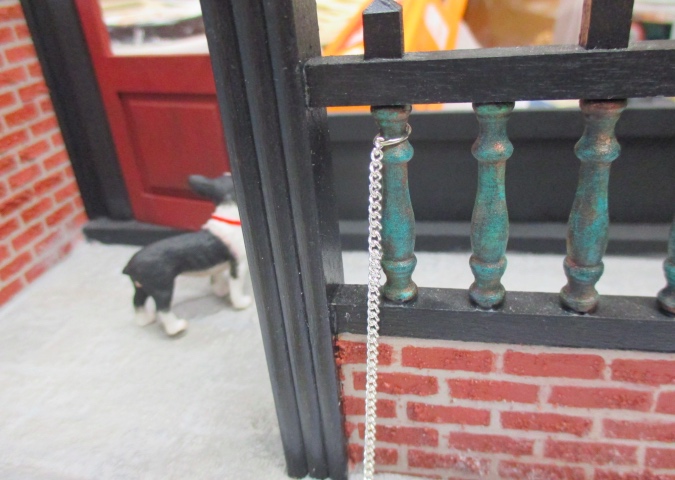
I used my micro drill to drill a hole in Max’s collar, where the leash would attach.
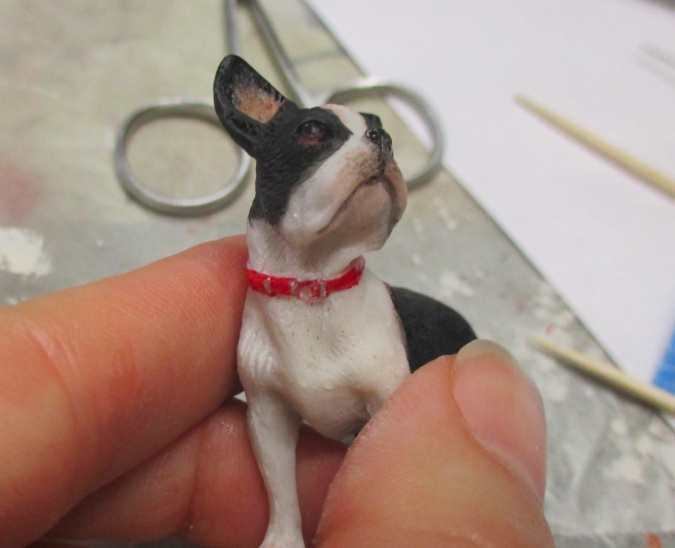
Then I glued in a cut-down eye pin attached to the other end of the chain. The eye pin is kind of large (I wanted it to look like the ring on the collar) but it serves its purpose.
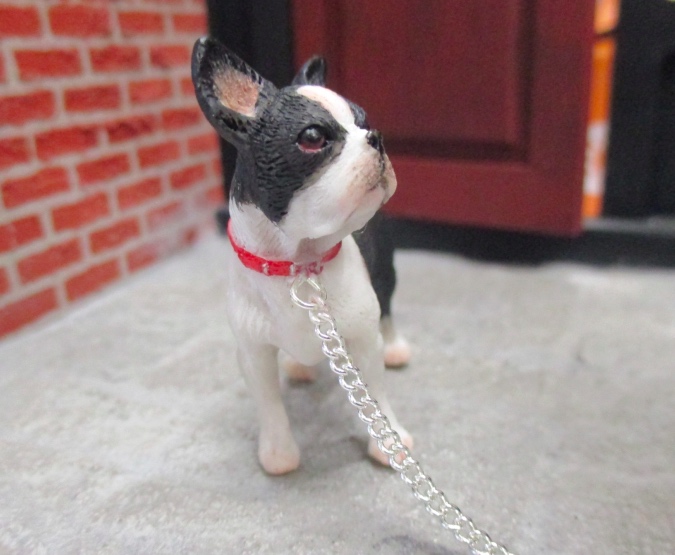
This is the equivalent of a six-foot leash, but it looks too long. I shortened it after I took this picture.
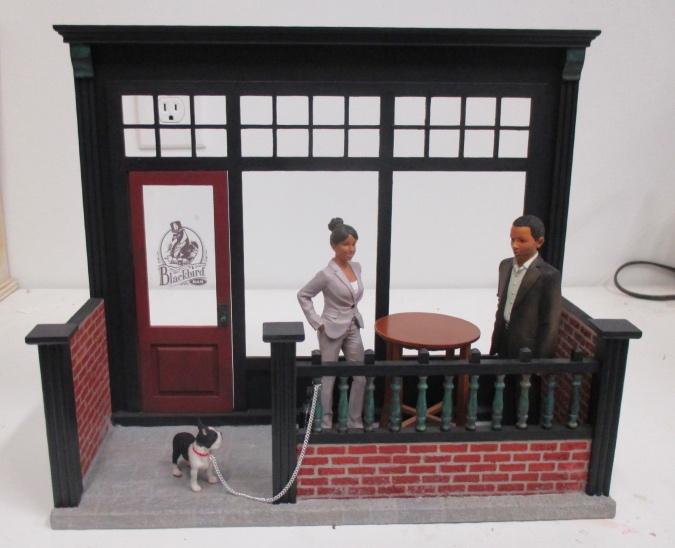
In looking for dolls for the bar, there were a lot more standing dolls available than seated dolls. I bought almost all of the seated dolls I could find and still didn’t have enough for all the chairs, so I decided not to use chairs at the outside table.
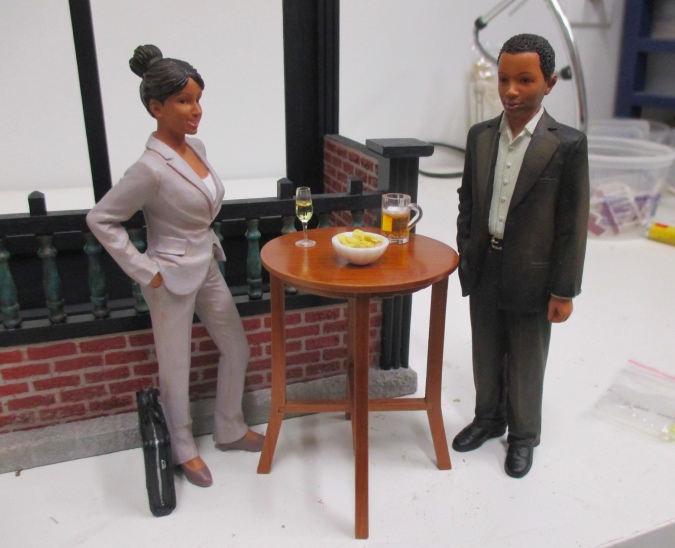
The potato chips are made from dried bell pepper seeds.

Here are the seated dolls. The first three are Houseworks dolls and the last one is Streets Ahead, from the UK. The quality of the Houseworks dolls is a lot better. (I actually bought four other Streets Ahead dolls that I didn’t end up using, because there’s such a noticeable difference in quality.) The dolls are top-heavy and kept falling off the chairs — and they haven’t even started drinking yet! — so I glued them down.
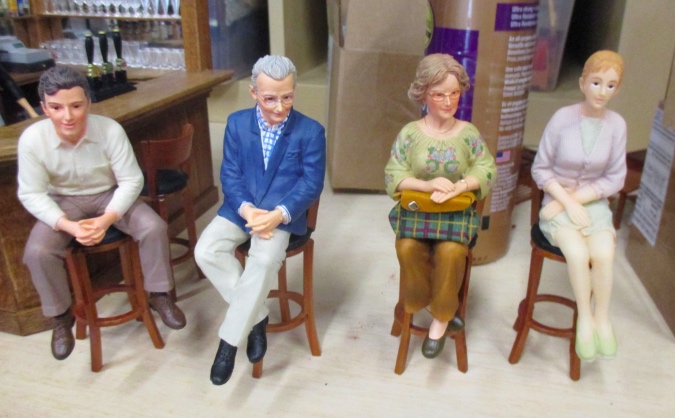
The older woman has her hands molded so they’ll rest on a tabletop. This works well when she’s sitting at a table, but the bar is too high. I put a handbag from Elf Miniatures on her lap to fill up the space.
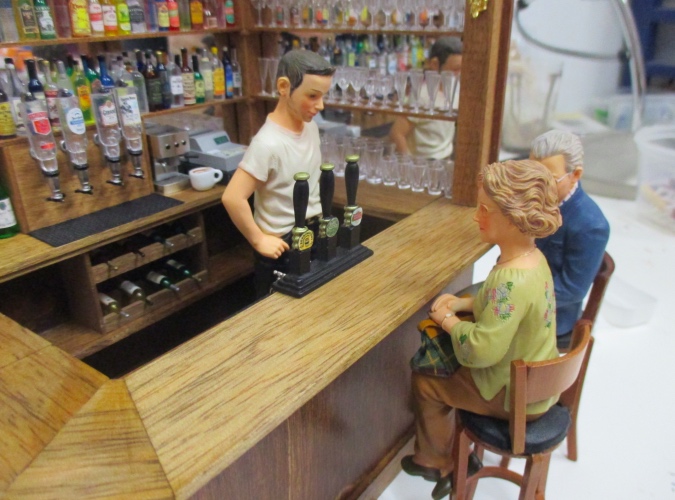

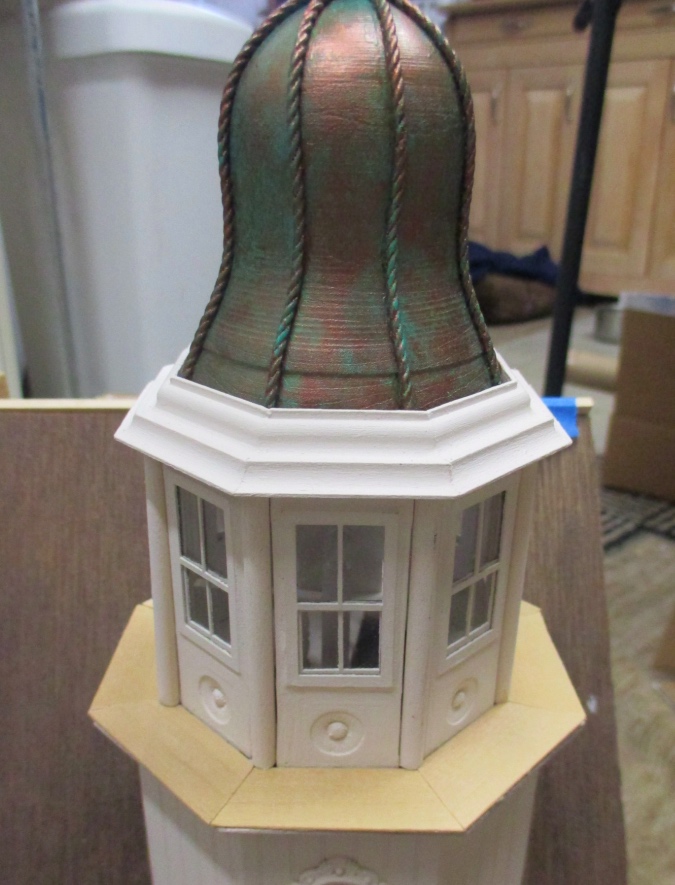
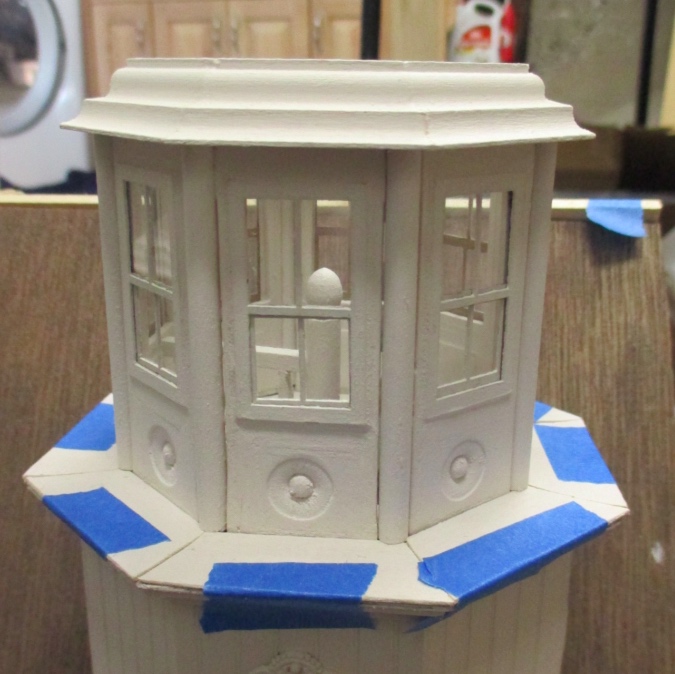
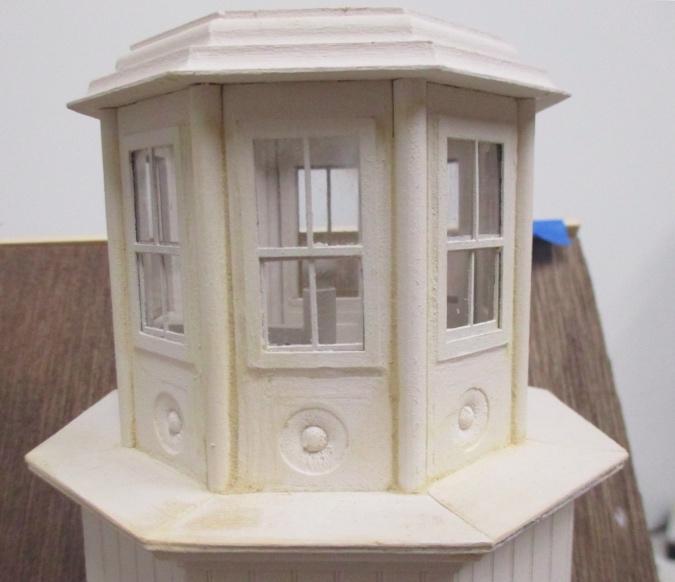
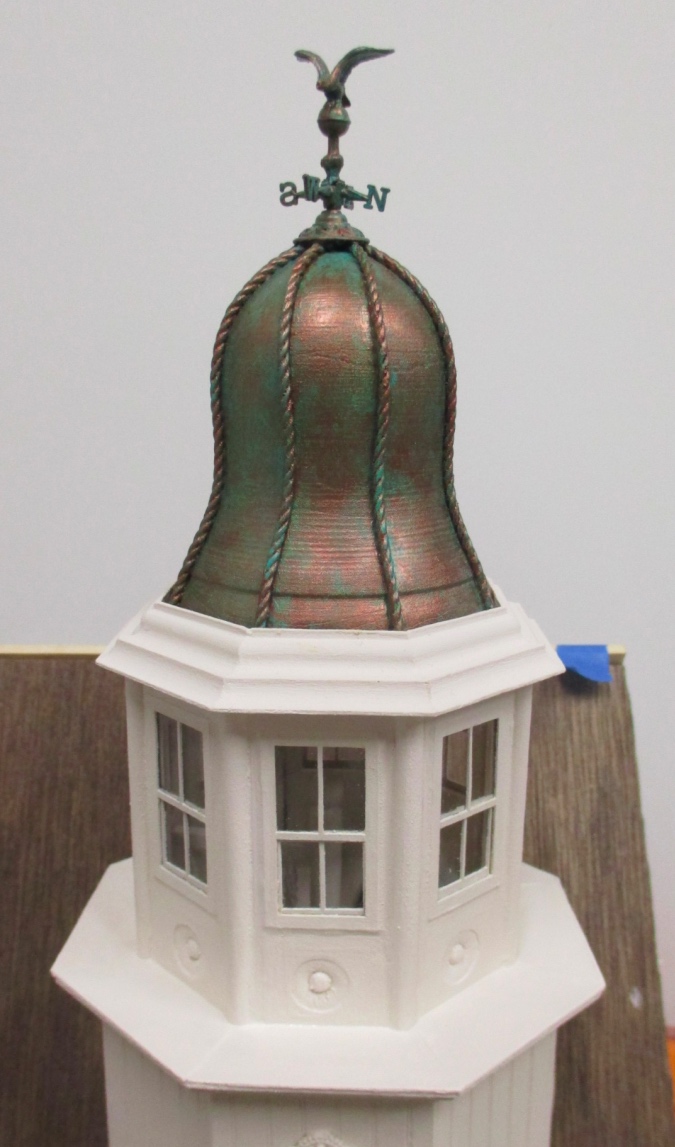
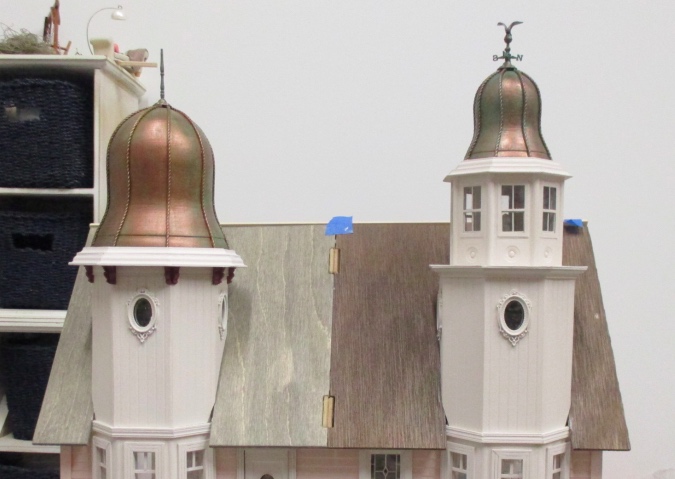
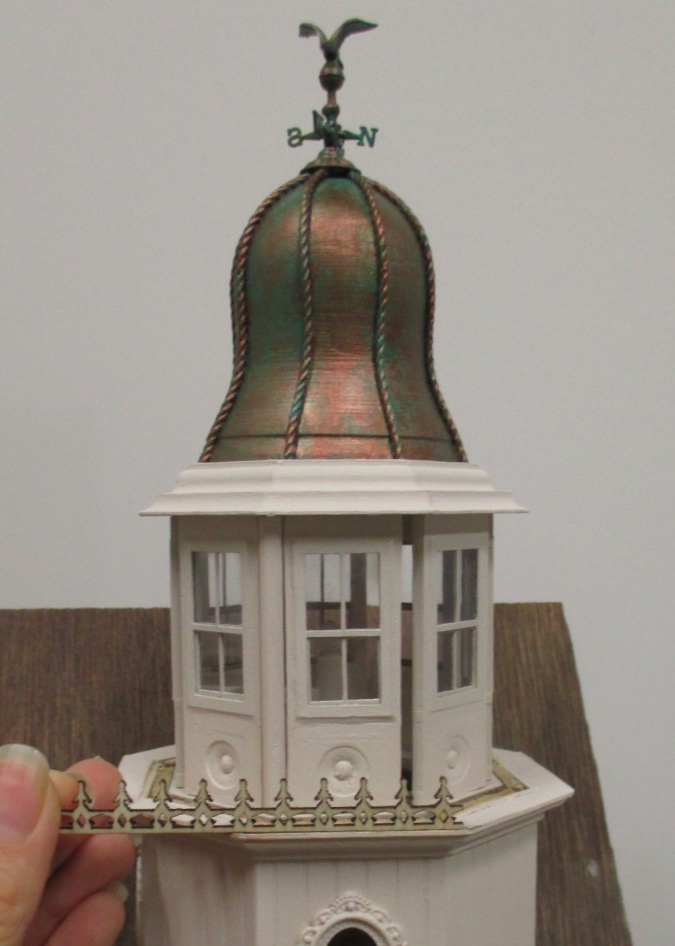
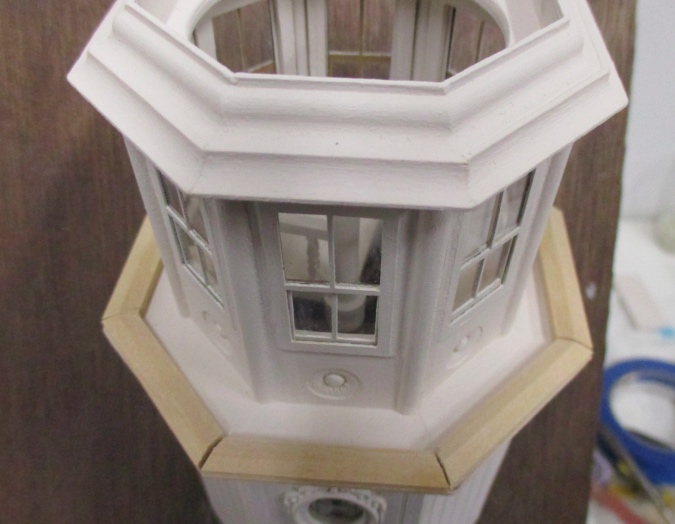
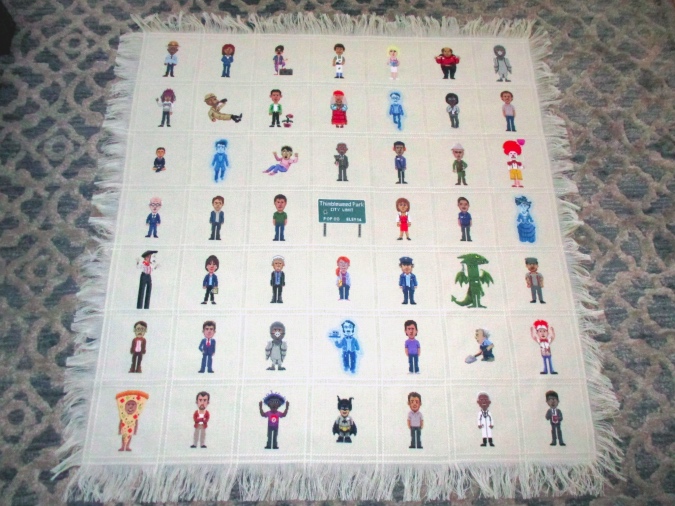
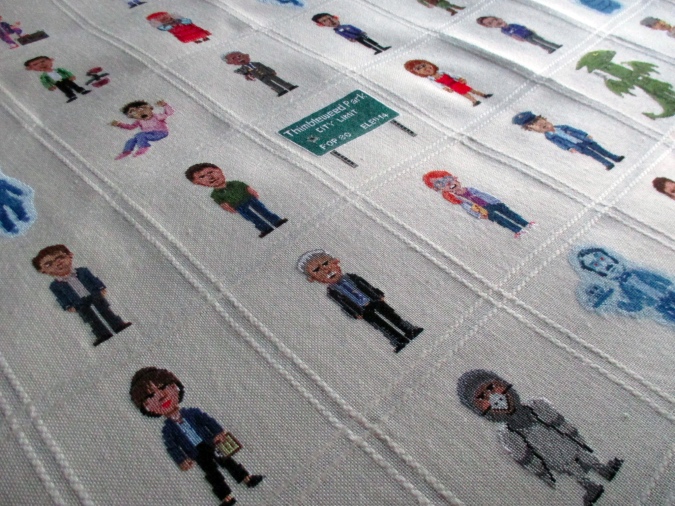
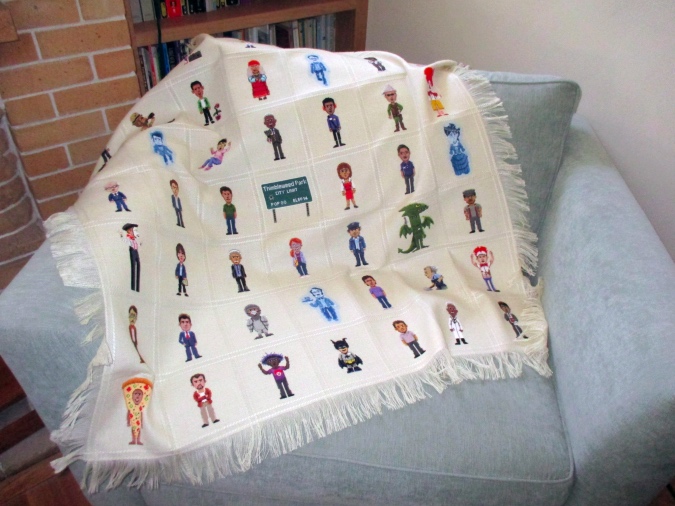
 Emily is a freelance writer, miniaturist, and adventure game enthusiast.
Emily is a freelance writer, miniaturist, and adventure game enthusiast.

